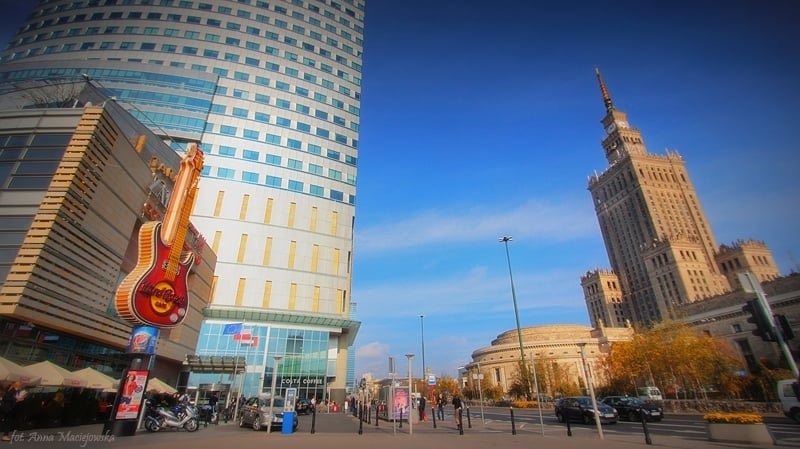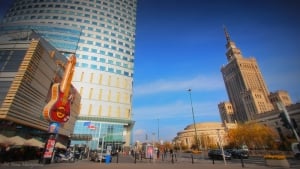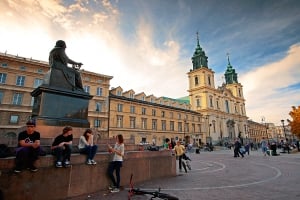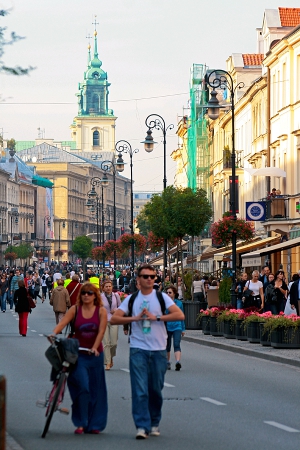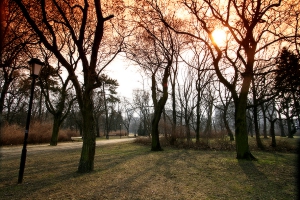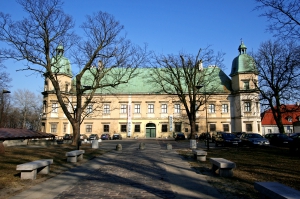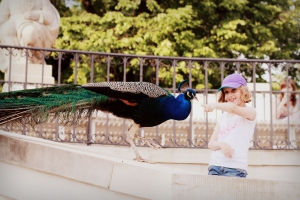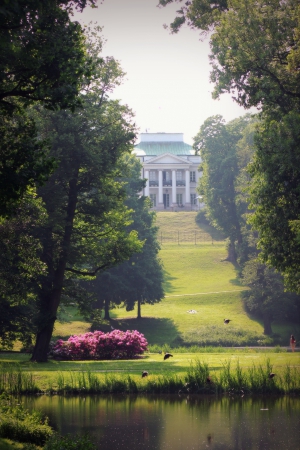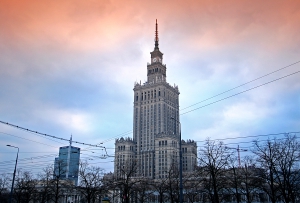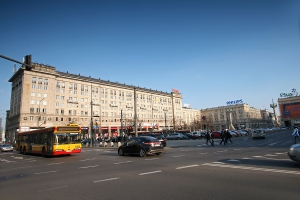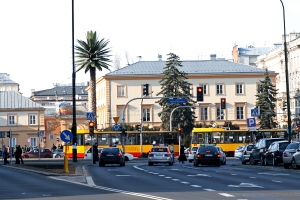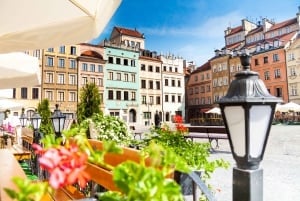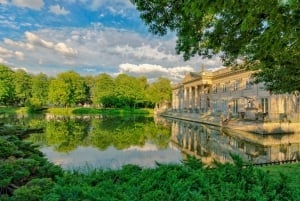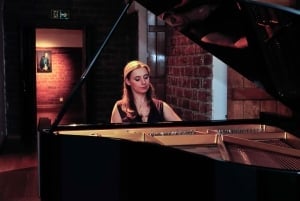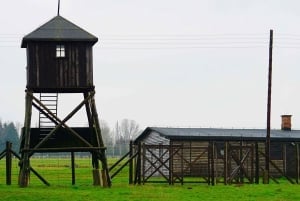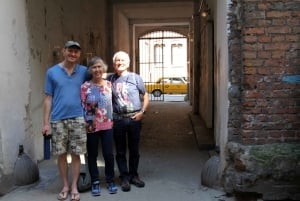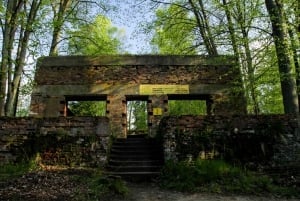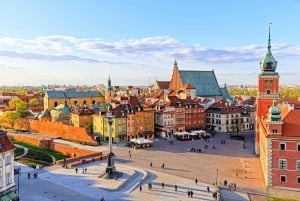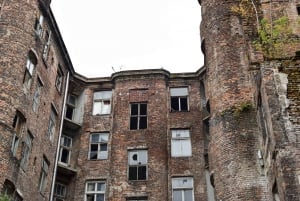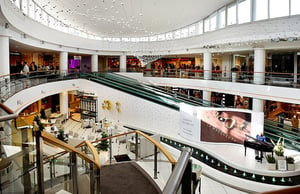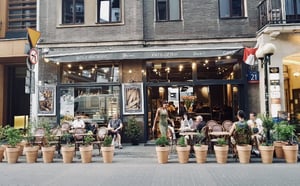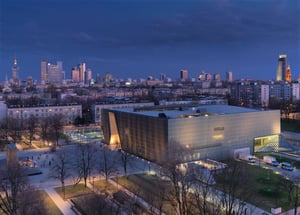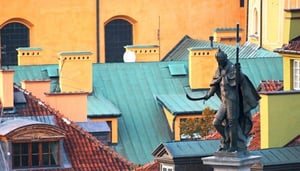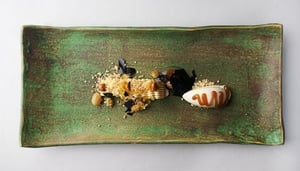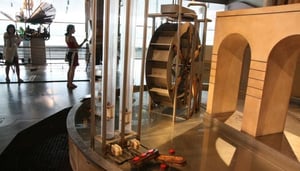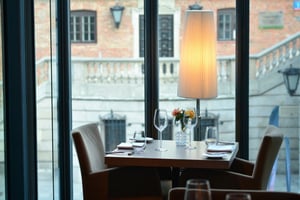City Centre - Srodmiescie
The city centre contains the most important representative buildings in Warsaw such as: the Presidential Palace, the Royal Palace, Pilsudski Square and Ujazdowski Park. The most important monuments of the capital include: the Palace of Science and Culture, the Old Town, (Royal Castle, Sigismundâs Column, Barbican, Cathedral, Old Town Square) the New Town (St. Hyacinthâs Church), the Royal Route, Lazienki Park, Marszalkowska district and the remains of the garden complex âNa Ksiazecemâ. You can also see some unusual sights such as the palm tree on de Gaulle Roundabout. There are 8 areas in this district: Muranow, New Town, Old Town, City Centre North, City Centre South, Solec, Powisle and Ujazdow. There is also the residential area of Marienszat. In the city centre you can find the most important train stations, theatres, museums and churches.
OLD TOWN
Warsawâs Old Town is a step back in time where you can enjoy walking along the cobble-stoned streets, be amazed by some of the historical sights and later on have a drink and treat yourself to a quality Polish meal. Dating back to the 13th century, this part of the capital city is steeped in history and has been flawlessly reconstructed having been nearly completely destroyed during World War II. This is why it gained its place on the UNESCO World Heritage List in 1980.
The Market Square in the Old Town is surrounded by an array of cafes and restaurants in Renaissance style buildings that have been wonderfully reconstructed. Enjoy the great variety of street performers in the shadow of the bronze statue of the Warsaw Mermaid, the symbol of Warsaw, which was erected in 1855 in the place where the Town Hall previously used to be. Some of the most interesting buildings are the History Museum on the north side of the square and the Literature Museum on the east side.
Old Town - Starowka, Warsaw
The Castle Square is probably the most popular area of the Old Town and it is here you can find the Royal Castle. Most parts of the castle are open with attractions such as two Rembrandt paintings and other works by Bernardo Bellatto, the court painter to Polandâs last king, whose images helped in the reconstruction of the Old Town. The façade and clock tower are one of the most picturesque views in the Old Town. From the side of the castle, down the grand steps, you can enjoy a wonderful view from riverbank level of the Kubicki Arcades. These arcades are original and now house an archaelogical exhibition. The statue of King Zygmunt III, is also located here. He is famous as being the king who moved the capital from to Warsaw.
There are many churches in the Old Town. St. Johnâs Cathedral, dating back to the 15th century, holds the remains of many significant Polish personalities including the last king of Poland, Stanislaw August Poniatowski, Nobel Prize winner Henryk Sienkiewicz and the first two Polish Presidents, Narutowicz and Moscicki. It is also the place where kings and queens were crowned. The Jesuit Church next to St. Johnâs Cathedral was established after the 15th century. St. Martinâs Church contains a mixture of styles, gothic on the lower part of the church and baroque on the upper part and is known as being a meeting place for opposition groups in the 70âs and the 80âs.
Other worthwhile sights include the Barbican which was built in 1548 and is the meeting point of the Old Town and the New Town. It is incorporated into the Old Town Wall which was built in the 15th century and took 200 years until it was fully constructed.
For more info on Warsawâs Old Town click here.
NEW TOWN
Even though it dates back to the late 14th century, this area, which has existed for centuries outside Warsawâs stone walls, is called New Town. Most of the buildings had to be reconstructed after World War II but there is a lot to see in this part of town. Freta Street is the main street in the New Town and connects the New Town to the Old Town.
The New Town Market Square used to contain a town hall but now the main attraction is St. Casimirâs Church. It was built in the 17th century in the Baroque style. Most objects in this church are from the 20th century but there are some from the 18th century. Elsewhere in the New Town, The Church of the Holy Spirit is often the starting point for pilgrimages to Czestochowa and is also in the Baroque style. Opposite along Freta Street is Saint Jacekâs Church which contains a mixture of Renaissance and Baroque styles and served as an insurgent hospital during World War II. Another church worth checking out is the Gothic Church of the Visitation of Blessed Virgin Mary. It is one of the oldest buildings of Warsaw, located just off the New Town Square with a wonderful view of the district of Praga from the rear of this church.
New Town, Warsaw
On Freta Street, there is also the Maria SkÅodowska-Curie Museum housed in the 18th century townhouse where she was born. Here you can see some of the Nobel Prize winnerâs scientific tools, personal objects as well as other objects from her time. A visit to the New Town would not be complete without seeing some of the palaces built by Polish nobles. The 18th century pink creamy, Neoclassical Sapieha Palace on Zakroczymska Street is another example of a building used as a hospital during the war. A plaque now hangs on the outer wall in remembrance of those who lost their lives during the war.
Dluga Streetis one of the oldest streets in Warsaw and was once an important market street and trade route leading to Sochaczew and Lowicz. This leads outwards from the New Town towards the wonderful Krasinski Square and Palace and the poignant Monument of the Warsaw Uprising.
For more info about Warsawâs New Town click here.
THE ROYAL ROUTE
The Royal Castle became the seat of Polish power in 1596 thanks to the decision of Zygmunt III to move the capital here from . A 22 metre column in Castle Square commemorates this. The Royal Castle dates back to the 13th century but has expanded and changed many times throughout history. Visitors can see large parts of the castle such as state room and private rooms once inhabited by kings and their court. The castle has an impressive façade and clock tower which dominates the entrance to the Old Town.
Krakowskie Przedmiescie is a wide cobbled pedestrian zone lined by old-fashioned lampposts and glass display showing 18th century Canaletto paintings of the city. St. Anneâs Church dates back to the 15th century. Frederyk Chopin had his first job in the Carmelite Church of the Assumption of the Virgin Mary and St. Joseph. A museum dedicated to the life of the pianist can be found further down the street at the Czapski Palace. Adam Mickiewicz is commemorated with a large statue of the Romantic poet. The Presidential Palace is unfortunately not open to visitors but is impressive to gaze upon. Another famous landmark on this street is the University of Warsaw, one of the biggest and most prestigious in the country. Perhaps the most famous church in Warsaw is the Church of the Holy Cross.
Nowy Swiat is popular for shopping, eating, drinking and socialising with a great variety of bars, cafes and restaurants to satisfy all tastes. Here you can see The Palace of Culture and Science, Stalinâs present to the capital which used to dominate the skyline. Near its southern end there is the Plac Trzech Krzyzy (Square of the Three Crosses) which is named after three gold crosses that once stood at this important crossroads along the Royal Route.
Follow Ujazdowskie Avenue to Ujazdowski Park and Castle, other important parts of the Royal Route which in turn lead onwards to Lazienki Park, one of the most popular parks in the city. This park contains many delights such as the Chopin Garden with a statue of the pianist. Other attractions include the Ignacy Paderewski Museum of Polish Immigration, Belweder Palace, the Palace on the Water located next to a lake and also the Roman inspired amphitheatre.
Last on the Royal Route is Wilanow Palace and Park. The palace was built for Jan III Sobieski, one of the greatest leaders in Polish history. The grounds were originally designed in the Italian Baroque style but then changed to a French geometrically styled layout. The Poster Museum located in a former stable is the biggest in the world with over 55,000 works of international poster art.
LAZIENKI DISTRICT
The Lazienki district is famous for many reasons. One of the most well-known places and one which is worth adding to your list of things to do when visiting Warsaw is Lazienki Park. This delightful park is an oasis of calm for those in search of a break from the rush in such a busy city and is a very popular space for walking in or for taking part in other forms of recreation. The name of the park comes from the lavish private bathing house established here by Stanislas Lubomirski. This was later turned into a palace next to a lake by the last king of Poland, Stanislas Poniatowski. This so-called Palace on the Water is one of the most popular sights in the park.
One of the other highlights here is the Chopin garden which contains an interesting bronze statue of Warsawâs favourite son sitting under a weeping willow tree with the branches stretched over his head as if playing the piano. Since 1959, there have been free piano recitals of Chopinâs music at its base every Sunday. The park also has some royal residences such as the White House which has a kingâs original bed as well as a fine collection of paintings. In the Old Orangery there is an example of an 18th century wooden court theatre which is in excellent condition with rich decorative painting.
Lazienki Park - The Royal Bath, Warsaw
The Josef Pilsudski Museum is located just outside the park in the Belweder Palace which was preciously a porcelain manufacturing plant as well as the residence of the Russian Grand Duke who ruled Poland when it was under the occupation of Russian forces during the time of the Tsars.
Not so far from Lazienki Park is Ujazdowski Park. This is another place of retreat in the capital city. It contains a fountain filled canal that stretches out beneath the stone riverbank escarpment towards the Vistula. Located here is also the second ever reinforced-concrete bridge in the world. There is also a childrenâs playground, sculptures by local artists and also a public weighing scales that has been in use since 1912.
Further on is the fascinating Ujazdowski Castle. This castle has had many uses over the years such as being used as a retreat for nobles and also as an army hospital. Thankfully it was saved from destruction after there were plans to knock down the structure after it was badly destroyed in World War II and replace it with a Peopleâs Military House. The castle was restored in 1981 and nowadays it houses the Centre for Contemporary Art.
For more information on the Lazienki District click here.


